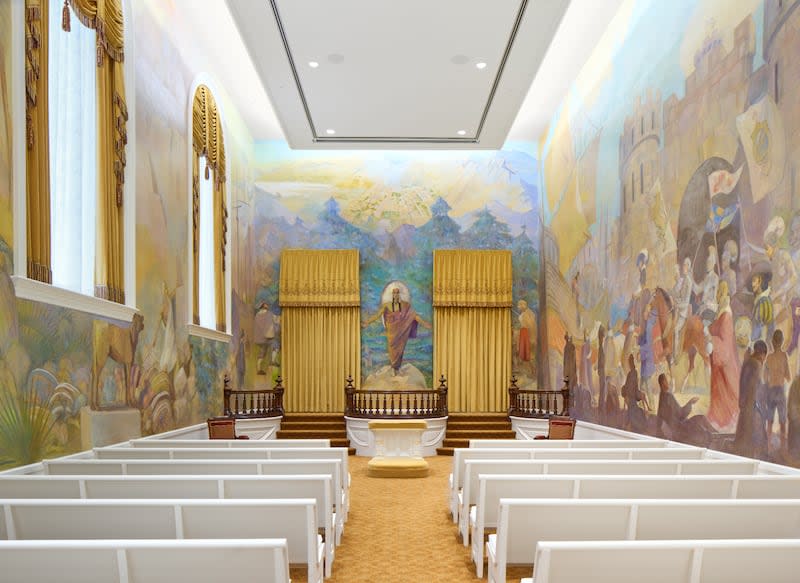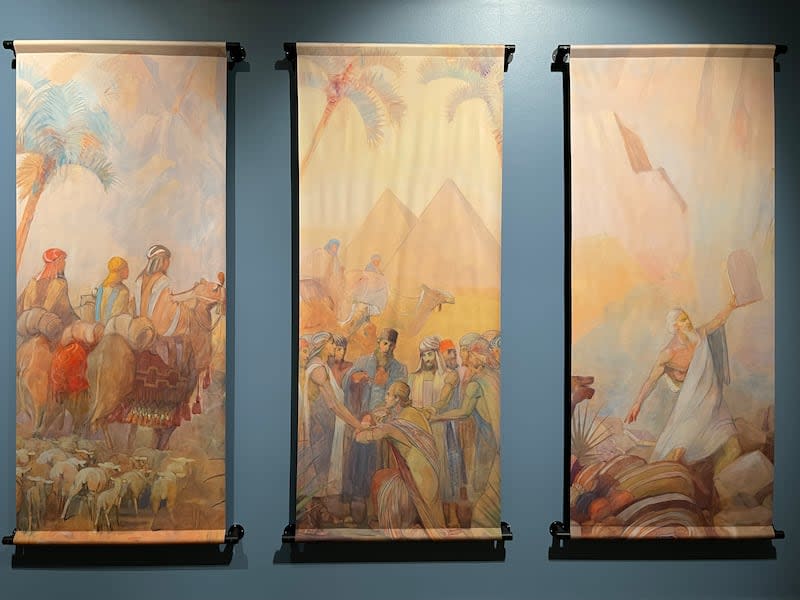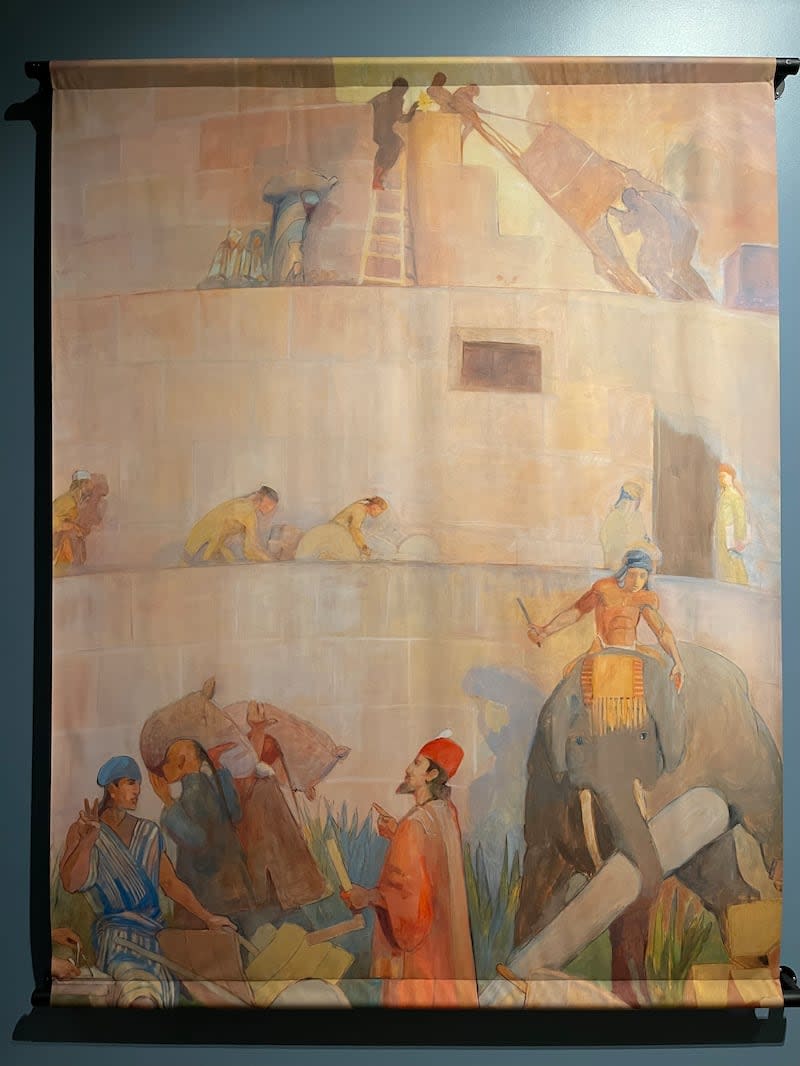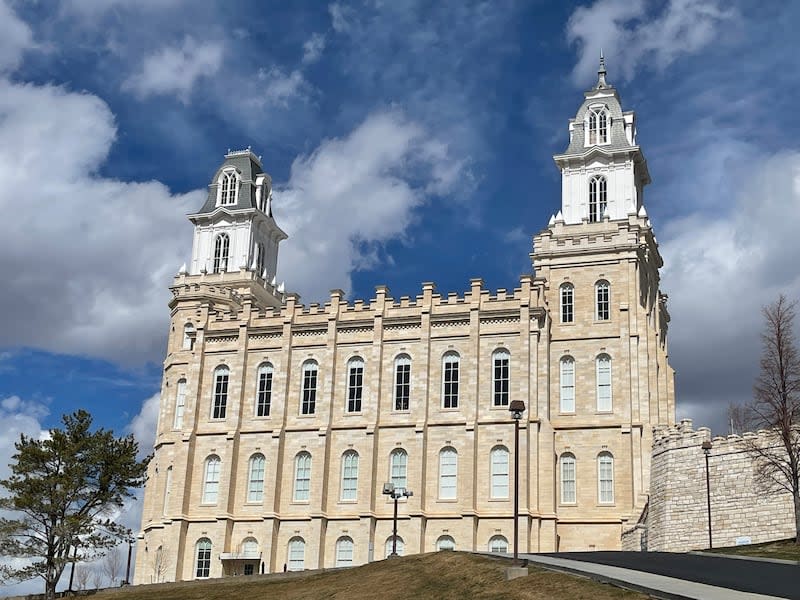Why do Latter-day Saints care so much about their history?
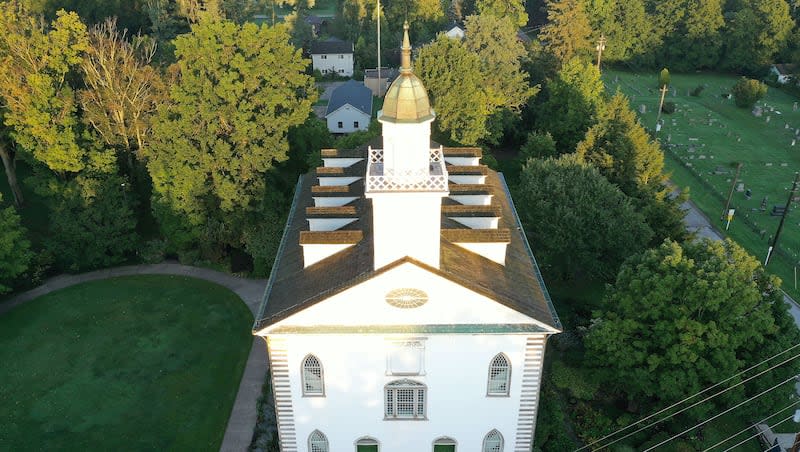
This article was first published in the ChurchBeat newsletter. Sign up to receive the newsletter in your inbox each Wednesday night.
In a busy few days over the past week, The Church of Jesus Christ of Latter-day Saints obtained the historic Kirtland Temple — its very first temple — and then reopened the pioneer-era Manti Utah Temple after spending 2½ years on preservation and renovation.
Each of those efforts was enough to prompt questions online like, why does the church care so much about history? Clear answers exist for those good questions.
The acquisition, along with the temple, of historic documents and artifacts added some interesting and added poignancy to the answer most Latter-day Saints would give. The current Church Historian and Recorder repeated that answer and gave insight into why it resonated so much with him over the past few weeks.
“Many of these documents are kept in obedience to a scriptural commandment ‘that there shall be a record kept among you,’” said Elder Kyle S. McKay, who is also a General Authority Seventy.
In fact, one of the documents the church bought from the Community of Christ along with the temple is a history of the church by the first official Latter-day Saint historian, John Whitmer.
“The John Whitmer history of the church, for example, when he’s called in the the 47th section of the Doctrine and Covenants, he’s not sure about his abilities, and yet he keeps this record that now comes into our possession. So it’s valuable,” Elder McKay said.
Elder McKay is Whitmer’s successor as Church Historian and Recorder.
“It’s of personal value to me because he’s one of my predecessors,” he said.
He also spoke appreciatively of other documents obtained in the transfer.
“When you think of the Joseph Smith Translation of the Bible, for example, these become scripture to us, and so they’re of great significance to us,” he said. “Then the personal nature of the correspondence between Joseph and Emma reveal a very real and human drama and love. They’re all valuable in their own way.”
The Kirtland Temple and other properties will be reopened to the public on March 25 after a three-week closure to complete the transfer. Some of the documents may also be on public display soon.
“The documents will be stored here (in Salt Lake City) at the Church History Library,” said Matthew Grow, the managing director of the Church History Department. “Some of the artifacts will be stored in the Church History Museum — the portraits of Joseph and Emma Smith, the Liberty Jail door, at least initially.
“We believe that we’ll have an opportunity to have a small museum exhibit in the coming weeks, which will be able to display many of these foundational documents, as well as the portraits and the Liberty Jail door.”
Elder McKay said this interest in preserving history dates back beyond the 1830 command to keep a record.
“If I can take a page from practices anciently, they preserved Aaron’s rod, and they preserved manna in a jar and they preserved the tablets for a reason,” he said. “It was to point them to events, but most of all to point them to the God who was guiding them.
“Similarly, in addition to those artifacts, we have records and accounts of God telling ancient Israel to create a memorial, to memorialize a significant event that happened in a given place. I’m thinking now of when Joshua led the people across the river Jordan as the Lord rolled back the waters.
“After they get to the other side, while the ark of the covenant is still being held in the bed of the river, he commands 12 men, one from each tribe, to go and gather up a stone. They’re large stones — they carry them on their shoulders — and with those stones they create a monument.
“In Joshua, chapter four, we read that the purpose for this is so that when the children ask, ‘What mean ye by the stones,’ they can tell them of the event that happened there. But the most significant explanation of that monument, I think, is in the last verse of Joshua, chapter four. That’s where the Lord says, ‘The reason we want this monument here is so that all the people of the earth might know the hand of the Lord, that it is mighty.’”
That message ties directly back to the Kirtland Temple and early Latter-day Saint history.
In May 2003, President Gordon B. Hinckley visited Kirtland, where he dedicated six newly constructed or renovated church-owned buildings. He spoke of the area’s spiritual significance for Latter-day Saints as a place where Jesus Christ appeared and ancient prophets Moses, Elijah and Elias visited to restore spiritual priesthood keys that remain vital to the church and its temple ordinances today. It’s also where the the Word of Wisdom was received.
“There is something unique and wonderful about what happened here,” President Hinckley said. “Nothing like it has occurred anywhere else in the history of the church, either before or since.”
Elder McKay said remembering those events is vital to the daily life of people around the world.
“That, ultimately, is the purpose for all of the historic sites, all of the artifacts, all of the documents that we preserve — so that all the people of the earth, including the people in this church, might know the hand of the Lord, that it is mighty.”
My Recent Stories
Renovated Manti Temple, preserved Minerva Teichert murals ready for 3-week public open house (March 11)
See the first photos from inside the renovated Manti Utah Temple (March 11)
After buying Kirtland Temple, church hopes to keep it ‘old’ (March 7)
About the church
The First Presidency released the specific site location for the Savai’i Samoa Temple.
It was a big week for church diplomacy. Elder D. Todd Christofferson met with a mayor in Budapest while Elder Gary E. Stevenson made the fourth visit by an apostle to Tanzania. And two international ambassadors visited church headquarters.
From feeding the hungry to advocating for religious freedom at the European Union Parliament, the Relief Society is answering ‘pressing calls’ across the globe.
The Urdaneta Philippines Temple open house begins next week and will be followed by its dedication in April.
The church released an updated list of 2024 mission leader assignments.
RootsTech: The 10 Million Names Project is recovering identities of enslaved Africans. Here’s how you can help.
Paraguay’s president visited the church’s expanded temple garment factory.
Church leaders held the ceremonial groundbreaking for the San Luis Potosi Mexico Temple.
What I’m reading
BYU’s men’s basketball team is playing in the Big 12 tournament and will play in the NCAA tournament during the month of Ramadan. So how will its three Muslim basketball players balance basketball with Ramadan observance? Meanwhile, Elder Patrick Kearon offered a Ramadan greeting to the church’s Muslim “brothers and sisters” worldwide.
Four BYU women won another track and field national championship.
Behind the Scenes
If you haven’t yet, please read my story on the preservation work done on the treasured Minerva Teichert paintings during the Manti Temple renovation. The murals cover 4,000 square feet on the walls of one of the endowment rooms. The story explains the purpose of the images, the danger they faced and how the church protected them. Here are some images:
